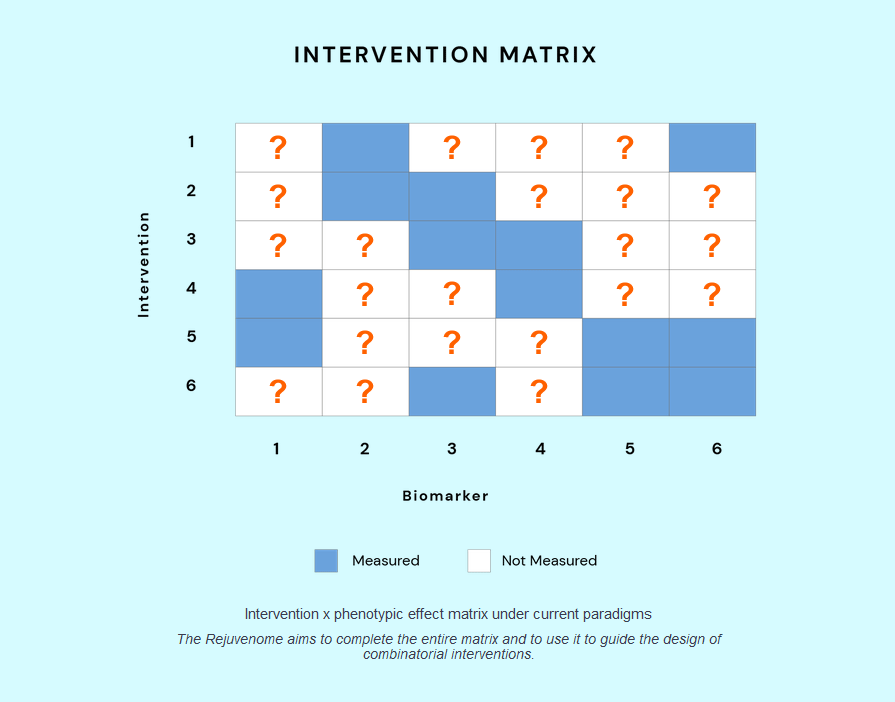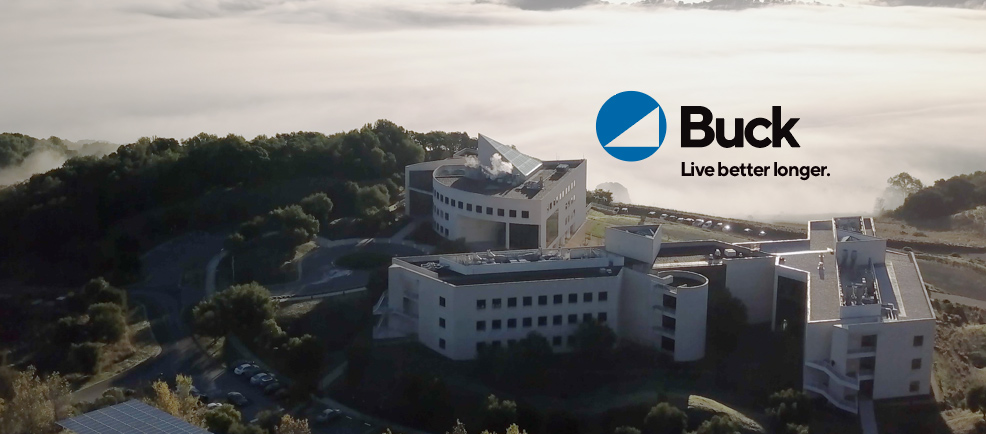
25th October 2021 $70m aging research project is launched The Rejuvenome Project, the first study of its kind, will seek to fully characterise aging and identify the best combination therapies for extending the human lifespan.
The Buck Institute and the Astera Institute have announced a comprehensive, multi-omics study of the biological effects of longevity interventions. Through a series of large-scale lifespan studies in genetically diverse mice, researchers will test interventions, both alone and in combination, known or suspected to slow or reverse aging and extend longevity. The work aims to create an open and comprehensive dataset to better understand the biology of aging and the underlying mechanisms of how to potentially impede the aging process. This dataset – freely accessible to the research and drug discovery communities – will provide the most complete picture of the impact of aging interventions in mice across multiple biomarkers and clinically relevant phenotypes. Leading scientists and thought leaders across the field will participate in the selection and design of the interventions. Longevity research is approaching a critical inflection point, with breakthroughs in basic science and multiple compounds being tested in clinical trials. However, while the field is starting to gain tools and treatments that target the biology of aging and improve health, a deeper and more fundamental understanding of how they work, and the models used to validate such findings, is still lacking. Further, because of vision, funding constraints, infrastructure limitations and other impediments, smaller projects are conducted independently of each other and there is little to no research into combination therapies, even though this will likely be the only avenue to achieving meaningful results. There is good reason to believe that such combinations will produce synergistic effects. Multi-gene knockouts in the nematode C. elegans have been shown to increase lifespan by 10 times, for example, while a combination of three compounds can extend fruit fly lifespans beyond the effects of individual components. Similar multifaceted approaches could produce the longest living mice and may lead to potential multi-factorial therapies for humans.
"The Rejuvenome Project was launched to target these bottlenecks," said Nicholas Schaum, PhD, Scientific Director at the Astera Institute. "We hope to do that by characterising treatments and regimens, both established and newly invented, for which we have reason to believe improve health and longevity." Previously, Schaum worked as a researcher at Stanford University, California, in conjunction with the Chan Zuckerberg BioHub. He organised dozens of labs and hundreds of researchers into a consortium that produced cell atlases, to characterise aging tissues in mice. These cell atlases became the foundation for Schaum's further studies into whole-organ aging and single-cell parabiosis. The Rejuvenome Project is expected to be complete in 2028. All wet lab operations will be centred at Buck, while the dry lab computational aspects will reside at the Astera Institute. "We are delighted to partner with Astera on this very significant work," said Eric Verdin, MD, President and CEO of the Buck Institute. "The breadth and depth of this project – centred around an unprecedentedly extensive and deep, whole-body functional and multi-omic assay panel – has the potential to redefine the scientific understanding of how to best intervene in the aging process." "The Rejuvenome is the quintessential moonshot project in longevity," said Astera's founder, Jed McCaleb. "If we are successful, it will provide the most complete picture ever of how best to intervene in aging and will produce powerful new avenues for drug development."
Comments »
If you enjoyed this article, please consider sharing it:
|









